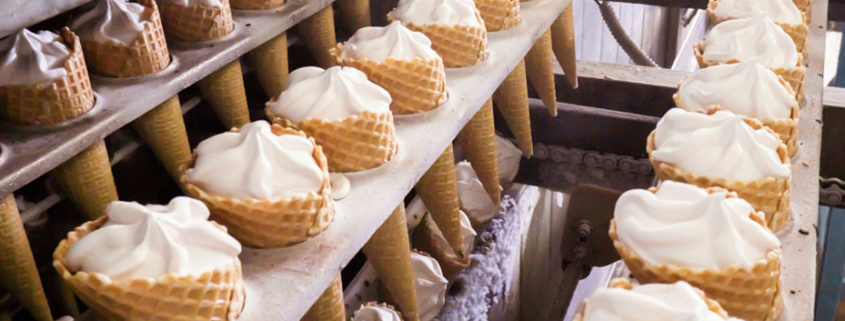Three ways the right panel components can reduce stress in food and beverage facilities
Most panel components are sourced based on electrical or functional specs, and then cost. But there are other factors to consider. Learn about three surprising benefits panel builders can realize by making smart component selections for food and beverage facilities.
Life has never been easy for people engaged in food and beverage production. Meeting constantly shifting customer tastes and expectations, striving to reduce production costs and waste, and shortening production cycles are just some of the pressures they face each day. The pandemic added a new and particularly difficult obstacle for many in the industry: meeting all the routine challenges with reduced workforces and increased health and safety measures in place.
Opportunities to meet all these challenges abound. One such opportunity is a careful reconsideration of the components selected for machine/process control panels. Several features found in commonly used panel components can simplify life for food and beverage facility managers by creating three important benefits: increased automation, enhanced safety, and simplified purchasing.
Add automation
To increase production output while reducing manpower, process managers and engineers are constantly looking for ways to add automation. Each production asset typically requires a disconnect switch. Some automation controls can be implemented via a controller or PLC rather than additional, individual switches, but the power circuity always needs a disconnect switch per load.
For existing panels, it can be a problem to find the needed space inside the enclosure for new automation devices. When selecting a disconnect switch, be aware that there are significant size variations that can mean the difference between fitting the switch into the existing panel or being required to either upsize the panel or add an auxiliary enclosure. For typical motor loads in the 75 HP range, 100 amp switches are available that take very little panel space.
Also consider switch installation requirements. Many manufacturers offer switches with strict requirements regarding placement and orientation. Ignoring those restrictions voids the component warranty, and could lead to early failure. Better to seek out components that have no restrictions regarding orientation. The ability to mount a switch in any direction, whether on the back panel or the door, provides added flexibility.
For new panels, more compact and flexible components enable smaller, less costly designs.
Enhance safety
In almost all production activities, including food and beverage, managers must frequently deal with less skilled, less knowledgeable employees. Industry in general continues to struggle with the loss of skilled veterans aging out of the workforce. Add to that the issues created by the pandemic, which often require employees to step into new or unfamiliar roles to backfill for missing production staff. Unfamiliarity with production assets and their potential dangers increases the chance of accidents and injuries.
The safety features of panel components can help keep the people maintaining those panels safe from power related injuries. For fusible disconnect switches, some designs disconnect power from both fuse terminals when the switch is turned off. Other designs can backfeed power on the load side via connections to variable frequency drives or other components.
For non-fusible switches, higher levels of safety can be achieved by selecting switches that clearly indicate whether or not they are connected to power. Switches are available with each pole individually enclosed. That not only prevents contact with the poles or blades, but also enables maintenance people to visually confirm that the power is disconnected.
Simplify inventory
Requirements and specs from OEMs can be very diverse and constantly changing. This can compel panel builders to keep a large variety of components on hand. But having a smaller number of more flexible components on the shelves that are able to meet a broad spectrum of requirements creates all kinds of benefits. Having one disconnect switch suitable for a range of applications, for example, means fewer SKUs to purchase and stock, with less chance you’ll find yourself with unused and unneeded components in inventory.
To minimize inventory, look for components able to handle a range of specifications or requirements. Some components can be modified or adapted to different requirements via add-ons that expand its capabilities. Some suppliers design their panel components with a building block approach in mind. Basic, frequently used component can be modified to meet specific requirements using a common set of accessories or add-ons.
Another aspect of component flexibility relates to panel size specs. For components with through the door handles, shaft length can be an issue. Panel builders can stock components in multiple shaft lengths, or simply purchase a long shaft device and cut it to the desired length. The first solution increases inventory, while the second adds labor and stress to the components while it’s being sawed. A better solution may be selecting components with adjustable length shafts.
Make smart choices
Most sourcing decisions for panel components are based first on electrical or functional specs, followed, of course, by price. But panel builders should go a bit further to consider the additional benefits that panel components can provide. That deeper look can reveal some important benefits that will be valued by your customers and end users.
—
Francisco Rodriguez
Food and Beverage – Account Manager
Oscar Moreno
Product Marketing Manager for Smart Power
ABB Electrification Business




